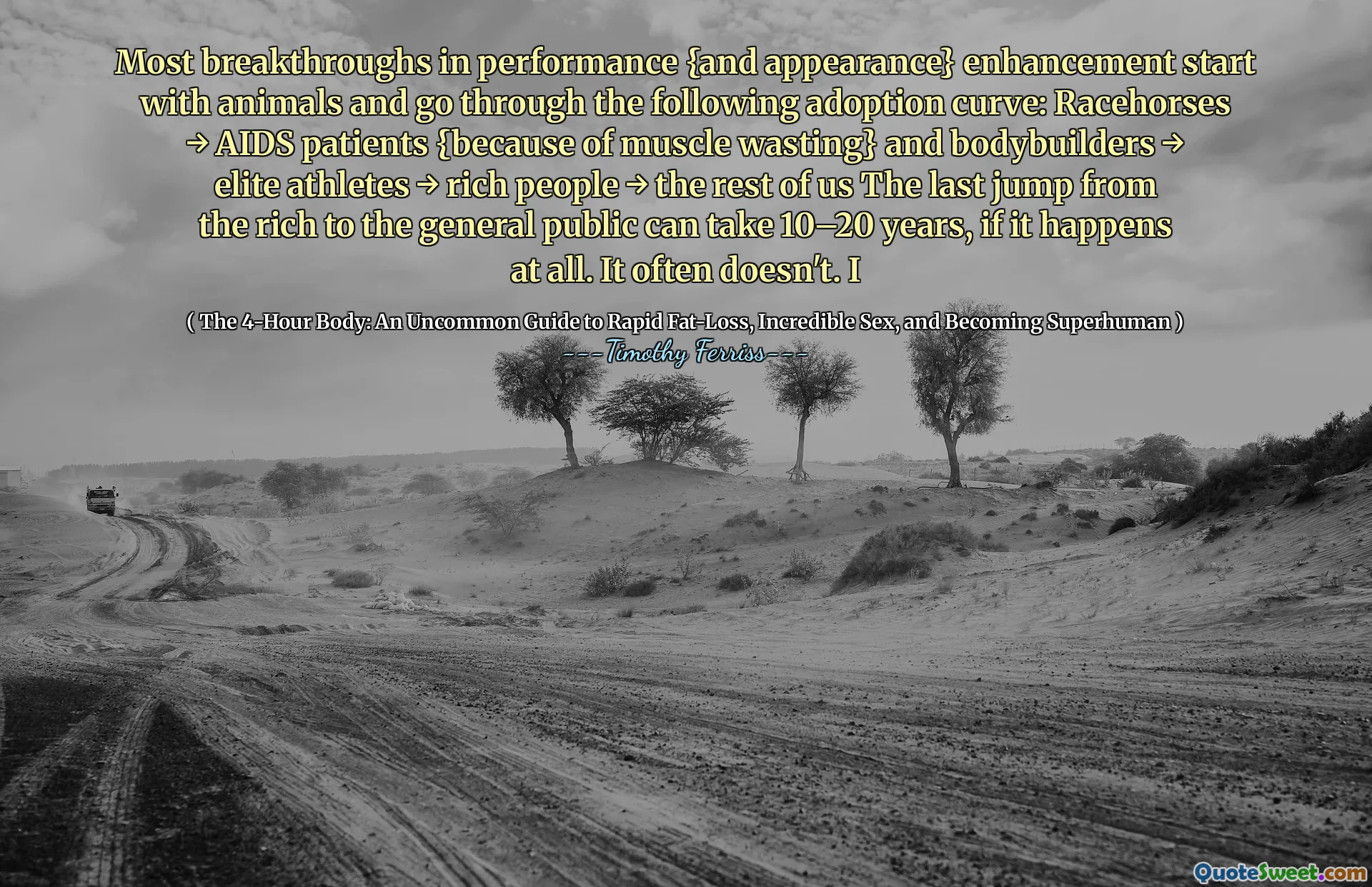
Most breakthroughs in performance {and appearance} enhancement start with animals and go through the following adoption curve: Racehorses → AIDS patients {because of muscle wasting} and bodybuilders → elite athletes → rich people → the rest of us The last jump from the rich to the general public can take 10–20 years, if it happens at all. It often doesn't. I
This quote highlights a fascinating pattern in the dissemination of technological and medical advancements related to performance and appearance. Initially, these breakthroughs tend to be confined to specialized groups—starting with animals like racehorses, which serve as test subjects due to their resource availability and controlled environments. From there, innovations often leap to human applications—first aiding vulnerable populations such as AIDS patients dealing with muscle wasting, then to bodybuilders seeking rapid gains, and subsequently to elite athletes seeking competitive advantages.
What is particularly insightful is the observation that the widespread adoption among the general public tends to lag significantly—sometimes by decades—and this transition often fails to fully materialize. The reasons for this delay can include economic barriers, regulatory hurdles, cultural resistance, safety concerns, or the perception of risk versus reward. It underscores how innovations often require a long window to mature before they become mainstream or affordable enough for the masses.
This pattern also prompts us to reflect on societal priorities and the ethics of technological adoption. While some breakthroughs—such as performance-enhancing drugs or genetic modifications—offer promising benefits, their deployment in broader contexts raises questions about fairness, health risks, and the natural limits of human ability. The quote challenges us to consider how society values innovation and how we decide which advancements should be made widely accessible. It also hints at a broader societal truth: transformative changes often bypass the general population initially and may never become universal, either due to resource constraints or systemic inertia.
In essence, the cycle described in the quote urges cautious optimism—recognizing the enormous potential for improvement amid the complex process of social, ethical, and regulatory acceptance.









